


Yes and no. Every lift which takes place on site is critical, because it carries with it a number of risks and hazards associated with the lift itself and surrounding environment (including people).
But not all lifts are created equal. Some lifts are more critical than others, because they pose a more imminent threat to the crane operators, assets and vicinity.
A critical lift plan is required for high risk scenarios, where the cranes capacity is exceeding the regular operating limits, or where work is in extremely close proximity to assets or the public.
What constitutes regular operating limits or 'extremely close'. These parameters will be set out by a combination of work and cranage laws, local ordinances, company best practices and crane manufacturers specifications.
Once the critical lift plan is created and established, the permit creator must ensure that the cranage superintendent and project manager have approved this form prior to work commencing on site.
Having a standardised critical lift plan template which your crane operators and new employees can turn to when creating new plans or referencing old plans is a great place to start.
The below example shows you what your critical lift plan might look like. The plan covers a number of general house keeping and record keeping fields, dives into some detail in regards to the specific of the lift and the crane, and then ends with approvals and signatures for beginning work.
We'll dive into some more detail around what needs to be in your lift plan (and why) below, but you can also expand the below example to preview all four (4) pages of the plan.

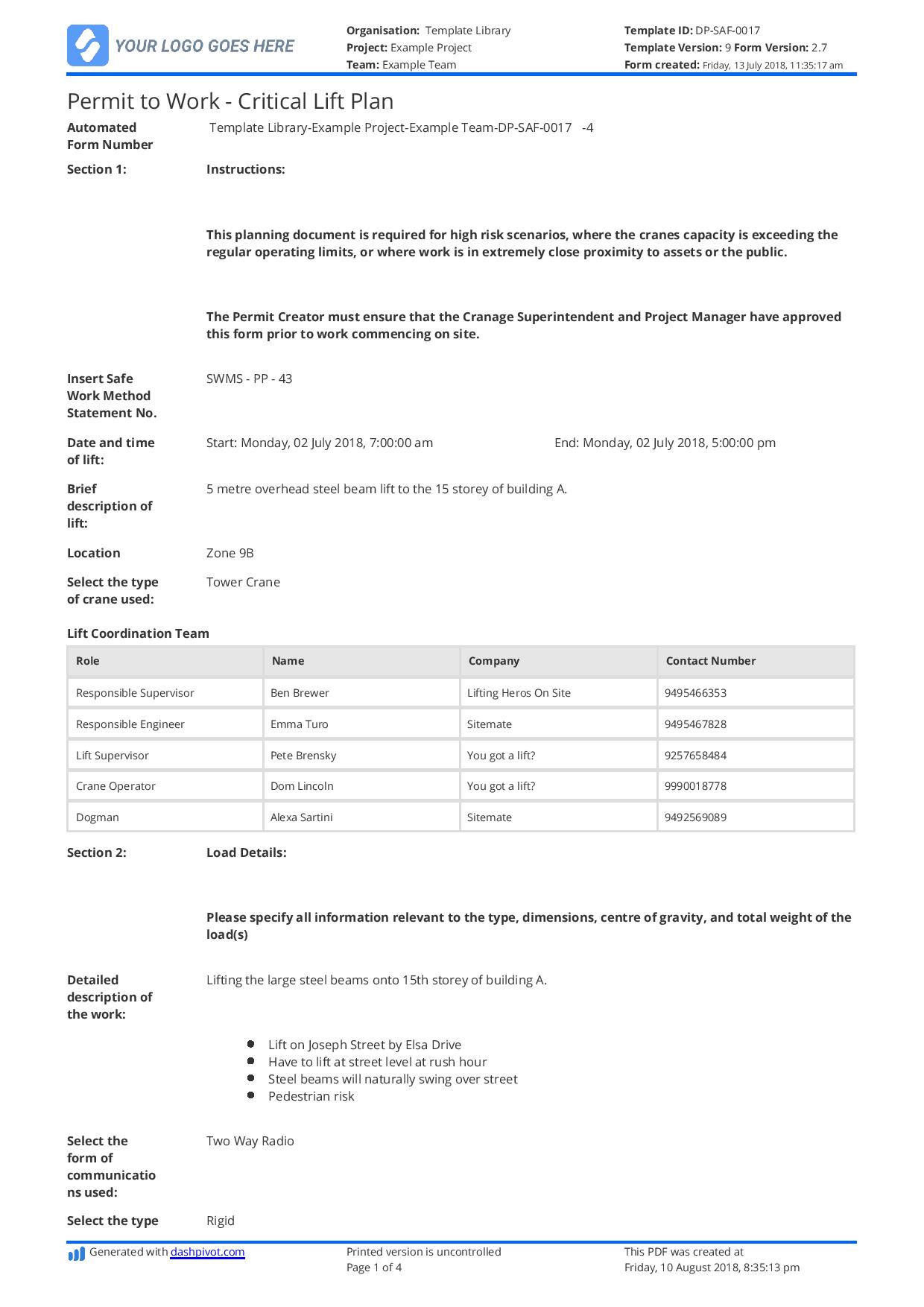

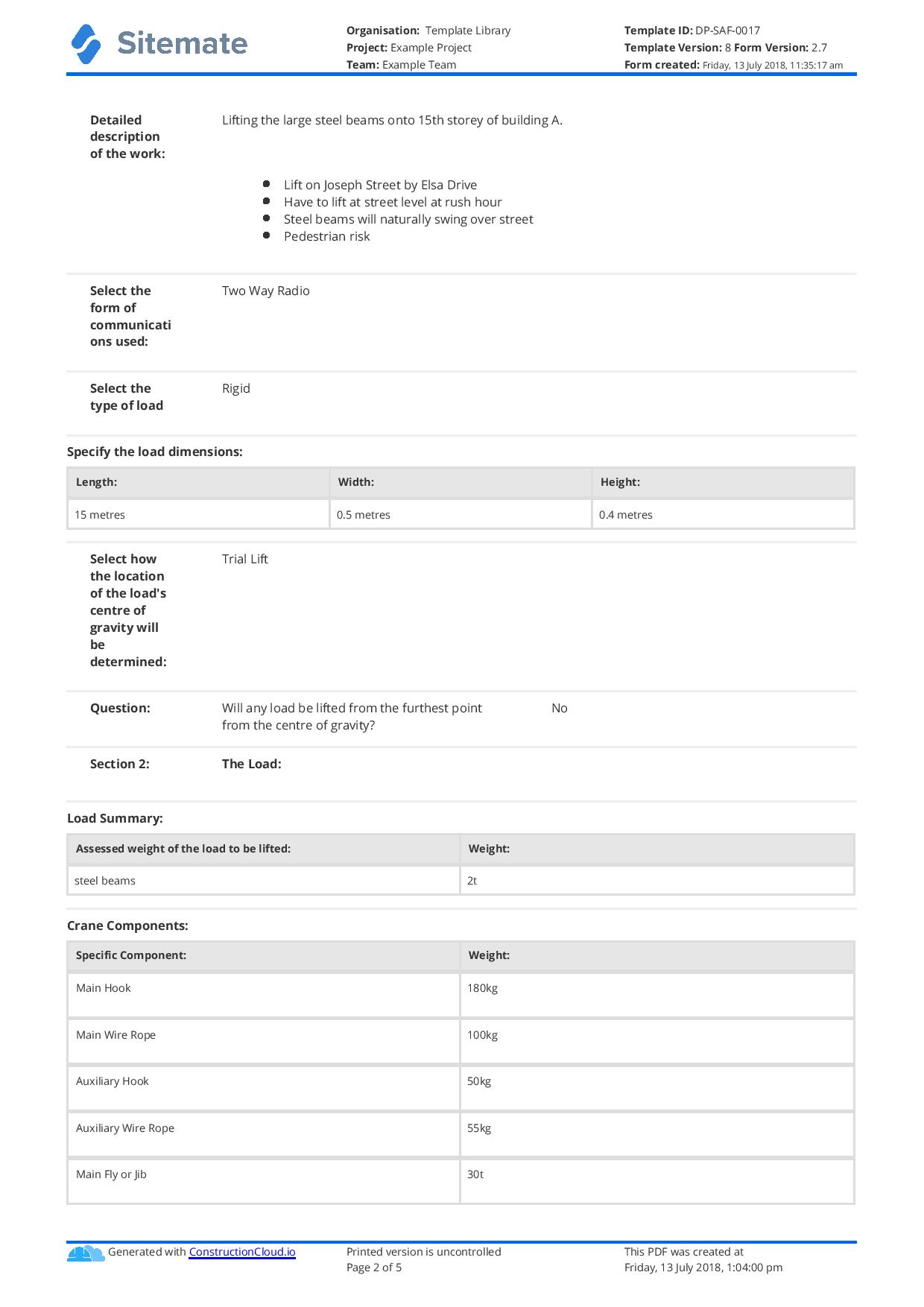
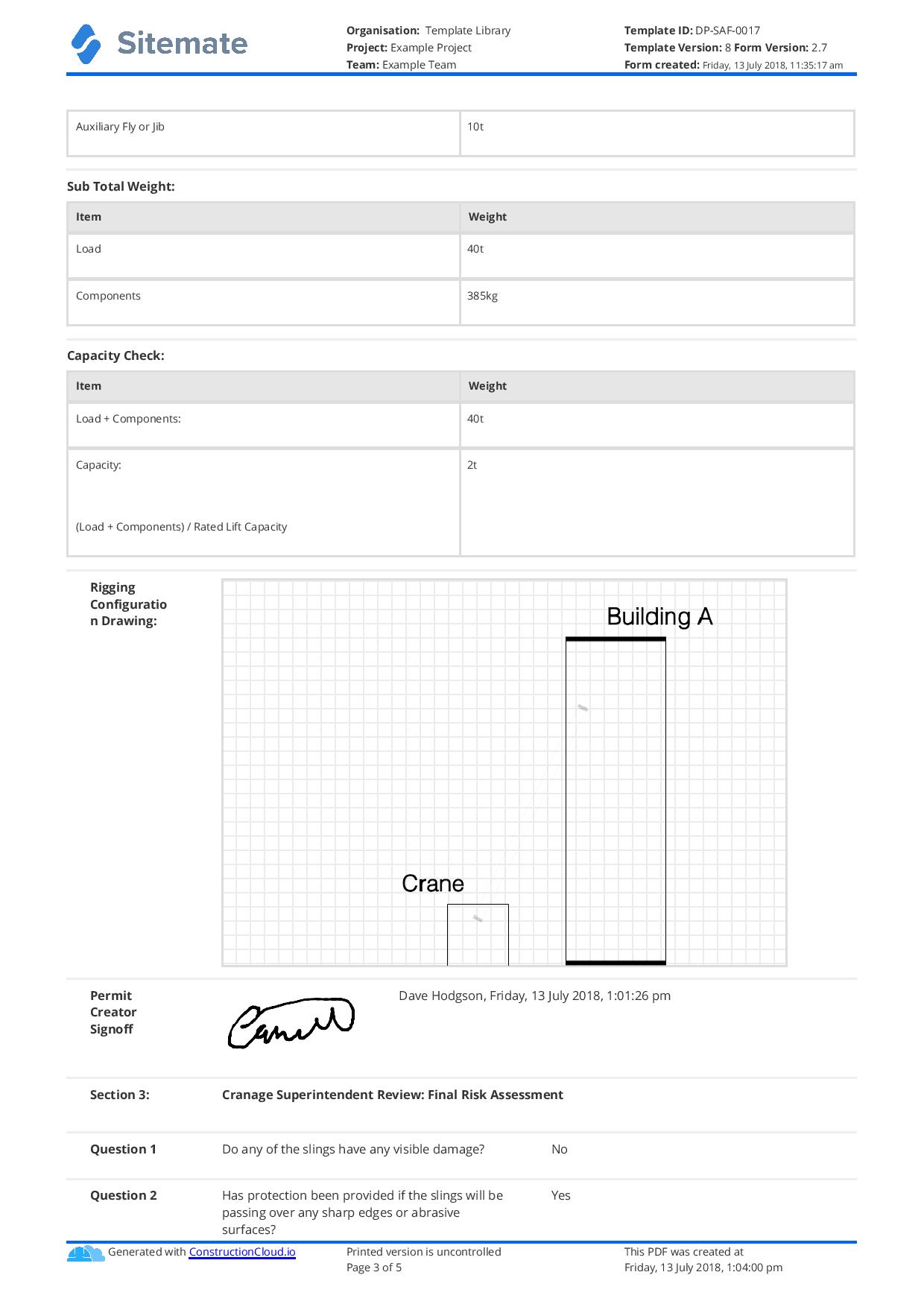
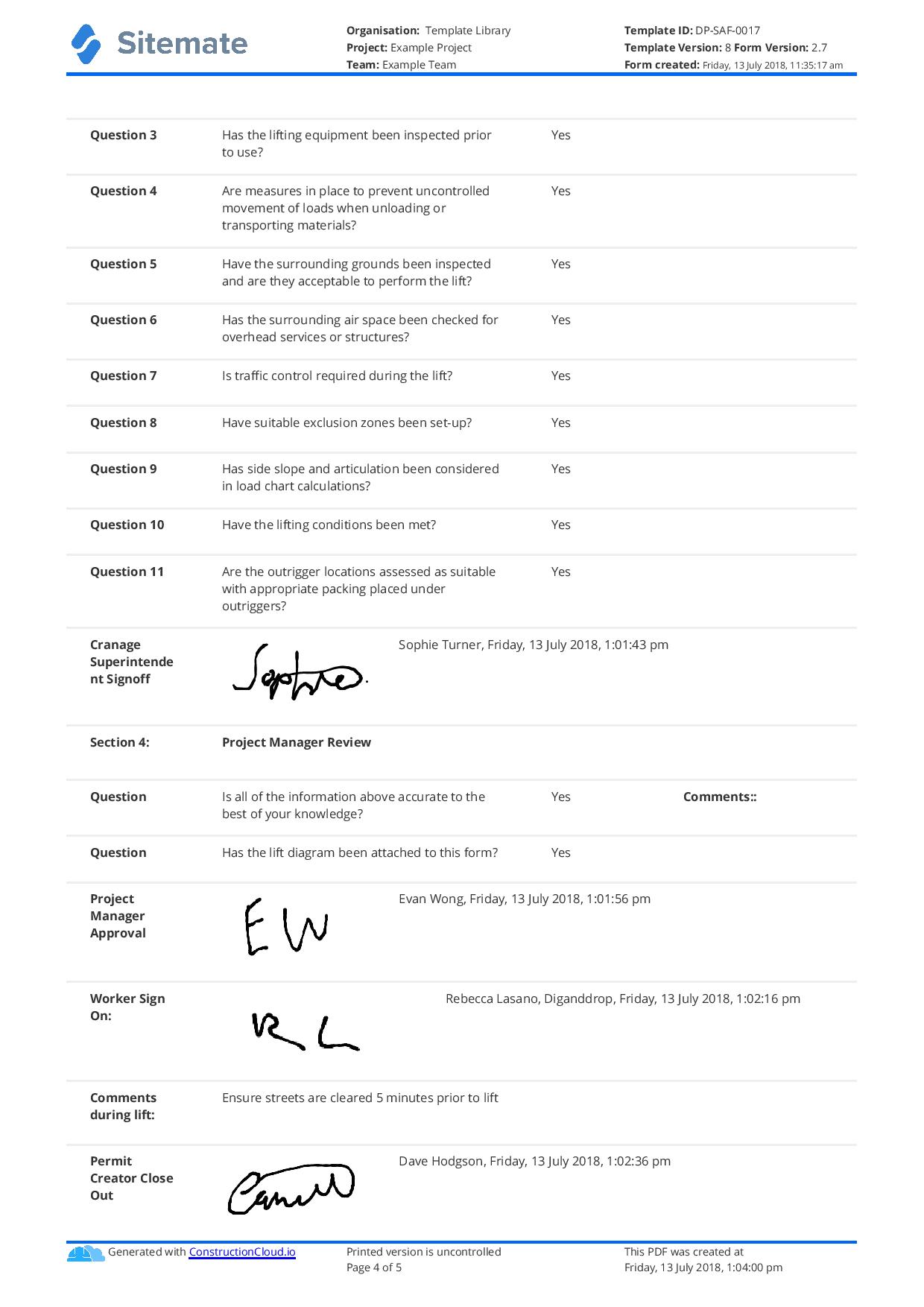
Critical lift plans are longer and more comprehensive than other crane forms and lift plans, because they are more 'critical'. The planning part of any critical lift is the key to ensuring the lift goes down without any problems. Any type of lift carriers with it a number of logistical hurdles, which is heightened by the additional obstacles put in play by an element of the lift or environment which makes it more 'outstanding' than a normal lift.
The first portion of your lift plan should cover some general record keeping:
In the event that there is a hazard or problem, and for future record keeping, these items are requisites in your plan.
You should also include a brief instruction snippet at the beginning of the plan, which serves to help new operators (and existing operators) understand how to conduct the plan - and why it's necessary.
Next, your lift plan (and the actual lift) will involve a number of parties who together ensure the lift is successful. This lift team usually consists of:
Featuring a table with the roles, names, company and contact number of each party is a good idea in terms of form etiquette and record keeping - just like the example above. Making these details a required field on your form ensures that all parties are engaged and responsible for the jobs they are 'signing' up for.
Next, your lift plan gets into the specific of the lift.
This section provides management and project parties with a more detailed description of the work (lift). It also details the:
The crane is an important part of any lift, and is often the initiator of the critical lift. Not every crane is good at everything, and sometimes they must be pushed beyond their comfortable bounds, in which case we must plan for that.
The crane section of a critical lift plan delves into details about:
This section gets into the mechanics of the crane and lift, and so should be completed by the relevant party who understands these mechanics.
All of these details combine to outline the type and effort of the actual lift. But part of any good plan - especially on construction and industrial sites - is a risk assessment.
After the load and crane capacities are understood, the cranage superintended will give a final review and risk assessment of the lift and environment.
The superintendent will check off a bunch of checklist questions which span the spectrum from the crane slings, to the traffic control and slope considerations. The risk assessment dictates whether or not the lift will go ahead.
Once the risk assessment is complete, the project manager will signoff on the plan and the plan moves to approved.
A crane Job Hazard Analysis is required in some circumstances to be fully compliant.
If managing these critical lift plans and other forms is an admin burden and headache to your workers and company, it may be beneficial to look into utilising designated safety software.
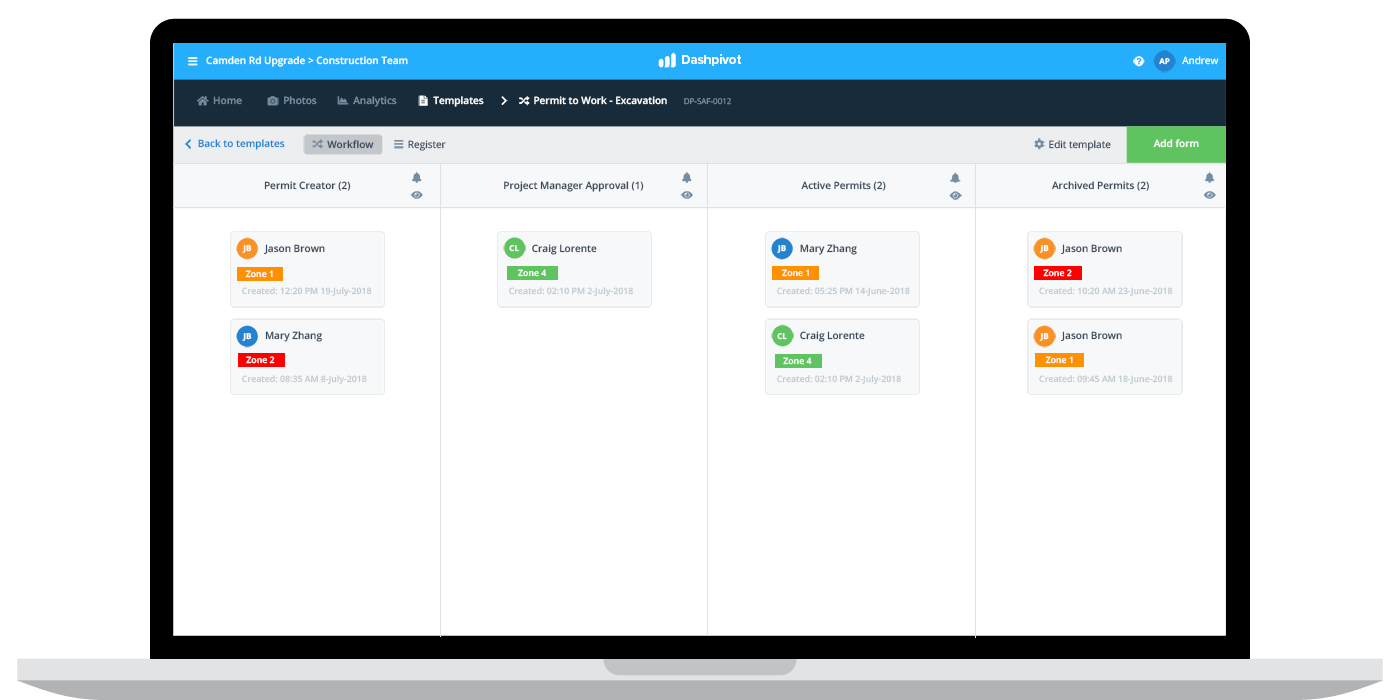
A safety system like Dashpivot can standardise your lift plan documents, make them easily accessible on tablet and mobile, and then streamline the plan completion, signoff and approval process with simple and customisable automation.
Software enables you to streamline any safety processes, but if you are only concerned with lift plans (right now), get started with a smart digital template below.